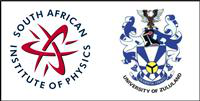Speaker
Abstract content <br> (Max 300 words)
We simulate the signal timing and fluxes from a Pulsar orbiting a black hole. This requires the integration of photon trajectories. We use numerical methods to solve the set of four coupled, second order ODEs describing the general relativistic motion of these photons in the Kerr space-time. Pulsar emission has been modelled by generating the necessary initial conditions for a large number of photons in a conical configuration. To perform a reliable statistical analysis of timing events, we must compute a very large number of trajectories. Although a single trajectory is integrated in a relatively small amount of time, the time cost in integrating a large number of trajectories makes this problem intractable on a single CPU. Since a single trajectory calculation is independant of all other trajectory calculations, this problem is well matched to a computational model which is both massively parallel and massively distributed. This investigation was done at scale, hence considerable computing resources were required for execution and post-processing. We report on our experience of conducting the simulation on the SA grid.
Would you like to <br> submit a short paper <br> for the Conference <br> Proceedings (Yes / No)?
Yes
Apply to be<br> considered for a student <br> award (Yes / No)?
Yes
Main supervisor (name and email)<br>and his / her institution
Alan Cornell Alan.Cornell@wits.ac.za
Level for award<br> (Hons, MSc, <br> PhD)?
PhD

